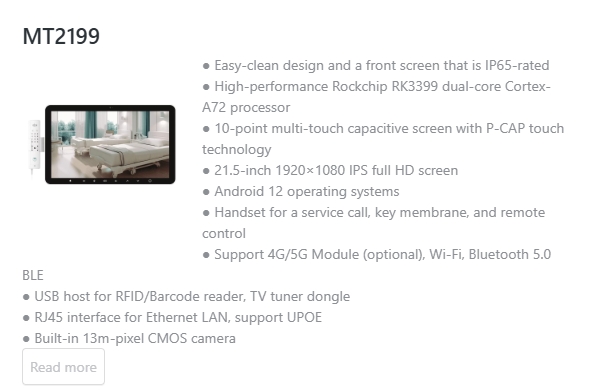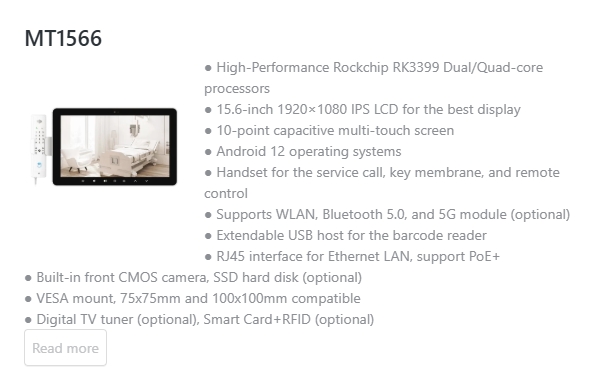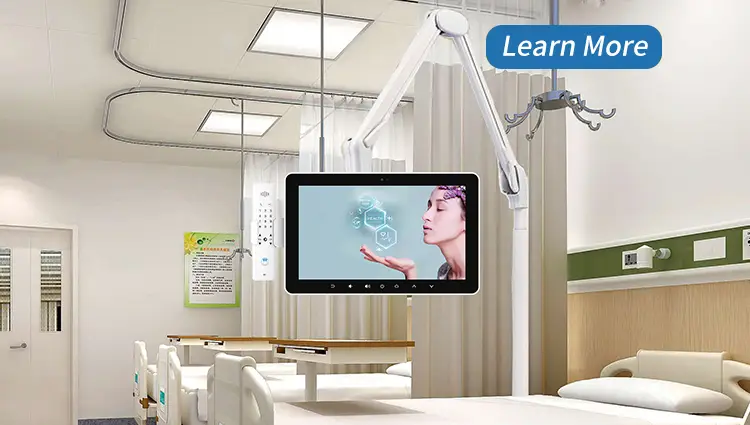In today’s fast-evolving healthcare landscape, patient satisfaction and engagement have become top priorities for hospitals and medical facilities across Europe and the United States. One cutting-edge solution driving this transformation is the Bedside Infotainment Terminal, a multifunctional device that brings entertainment, communication, and education directly to patients’ fingertips. Designed to enhance the hospital experience, these terminals are reshaping how patients interact with their environment and how healthcare providers deliver care. In this in-depth guide, we’ll explore what Bedside Infotainment Terminals are, their key features, benefits, impact on patient care, and tips for choosing the right system—all tailored to the preferences and needs of Western audiences. Whether you’re a healthcare professional, a patient, or simply intrigued by the latest medical innovations, this article offers a comprehensive look at this game-changing technology.
- What is a Bedside Infotainment Terminal?
- The Evolution of Bedside Infotainment Terminals
- Key Features of Modern Bedside Infotainment Terminals
- Benefits of Bedside Infotainment Terminals
- The Impact of Bedside Infotainment Terminals on Patient Care
- Choosing the Right Bedside Infotainment Terminal
- The Future of Bedside Infotainment Terminals
- Conclusion
What is a Bedside Infotainment Terminal?
A Bedside Infotainment Terminal is an advanced, touchscreen-equipped device installed next to a patient’s hospital bed. It serves as a one-stop hub for entertainment, communication, and information, empowering patients during their stay. These terminals go beyond traditional hospital TVs by offering a wide range of services, including:
- Entertainment: Access to movies, TV shows, music, games, and internet browsing.
- Communication: Tools for video calls, messaging, and staying connected with family or healthcare staff.
- Education: Information about diagnoses, treatments, and recovery plans.
- Hospital Services: Options to order meals, adjust room settings (like lighting or temperature), or request assistance.
The primary goal? To make hospital stays more comfortable, engaging, and informative while giving patients a sense of control. For healthcare providers, these devices streamline workflows and boost patient satisfaction—a key metric in modern healthcare systems.
The Evolution of Bedside Infotainment Terminals
The journey of bedside infotainment began decades ago with simple solutions like wall-mounted TVs and bedside radios. These offered basic distractions but lacked interactivity. Fast forward to the early 2000s, when the first digital bedside terminals emerged in hospitals across Europe and the U.S. These early models provided limited entertainment and communication options, often hindered by bulky designs and outdated technology.
Today, thanks to rapid advancements in digital interfaces, Bedside Infotainment Terminals have evolved into sleek, powerful tools. Modern systems boast high-definition displays, seamless integration with hospital networks, and intuitive designs that cater to patients of all ages and abilities. This evolution reflects a broader shift in healthcare toward patient-centered care, where technology plays a pivotal role in improving outcomes and experiences.
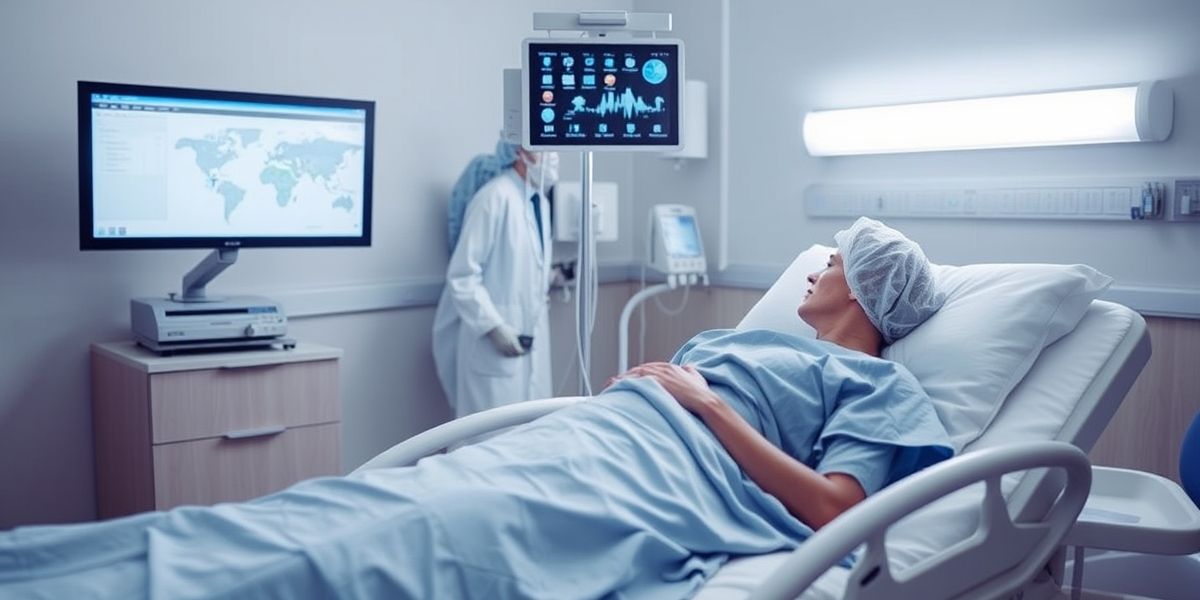
photo from internet
Key Features of Modern Bedside Infotainment Terminals
What sets today’s Bedside Infotainment Terminals apart? Here’s a closer look at their standout features:
1. High-Definition Touchscreen Interface
- Large, responsive screens make navigation a breeze, even for patients with limited mobility or vision challenges.
2. Entertainment Options
- From blockbuster movies to soothing playlists and interactive games, patients can enjoy a personalized entertainment experience. Some systems even integrate premium services like Netflix or Spotify.
3. Internet Access
- Staying connected is vital during long hospital stays. Patients can browse the web, check emails, or catch up on news—keeping them tethered to the outside world.
4. Communication Tools
- Built-in video calling and messaging allow patients to connect with loved ones or consult with doctors remotely, reducing feelings of isolation.
5. Educational Content
- Patients can access tailored resources about their health conditions, medications, or post-hospital care, fostering informed decision-making.
6. Hospital Services Integration
- Need a meal or extra blanket? Patients can use the terminal to place requests or tweak room settings without waiting for staff.
7. Multilingual Support
- In diverse regions like the U.S. and Europe, terminals offer interfaces in multiple languages to accommodate varied patient populations.
8. Accessibility Features
- Voice commands, screen readers, and adjustable text sizes ensure the device is usable for patients with disabilities.
These features combine to create a versatile tool that meets the diverse needs of patients while aligning with the tech-savvy expectations of Western audiences.
Benefits of Bedside Infotainment Terminals
The rise of Bedside Infotainment Terminals isn’t just a tech trend—it’s a shift with tangible advantages for patients and healthcare providers alike. Here’s why they matter:
1. Enhanced Patient Satisfaction
- Hospital stays can feel monotonous and isolating. Entertainment and communication options keep patients engaged, boosting their mood and satisfaction—a metric tied to hospital ratings in the U.S. and Europe.
2. Improved Patient Engagement
- Knowledge is power. When patients understand their treatment through educational content, they’re more likely to follow medical advice, leading to better recovery rates.
3. Streamlined Communication
- Direct messaging and video calls reduce the need for frequent staff check-ins, allowing nurses and doctors to focus on urgent tasks.
4. Increased Efficiency for Healthcare Providers
- Automating routine requests (like meal orders) frees up staff time, improving operational efficiency—a critical factor in busy hospitals.
5. Cost Savings
- While upfront costs can be high, the long-term payoff includes higher patient satisfaction scores (linked to reimbursements in the U.S.) and reduced staff workload.
6. Competitive Advantage
- In a crowded healthcare market, offering cutting-edge technology can attract patients and top talent, setting facilities apart.
These benefits resonate strongly in Western healthcare systems, where patient experience and operational efficiency are under constant scrutiny.
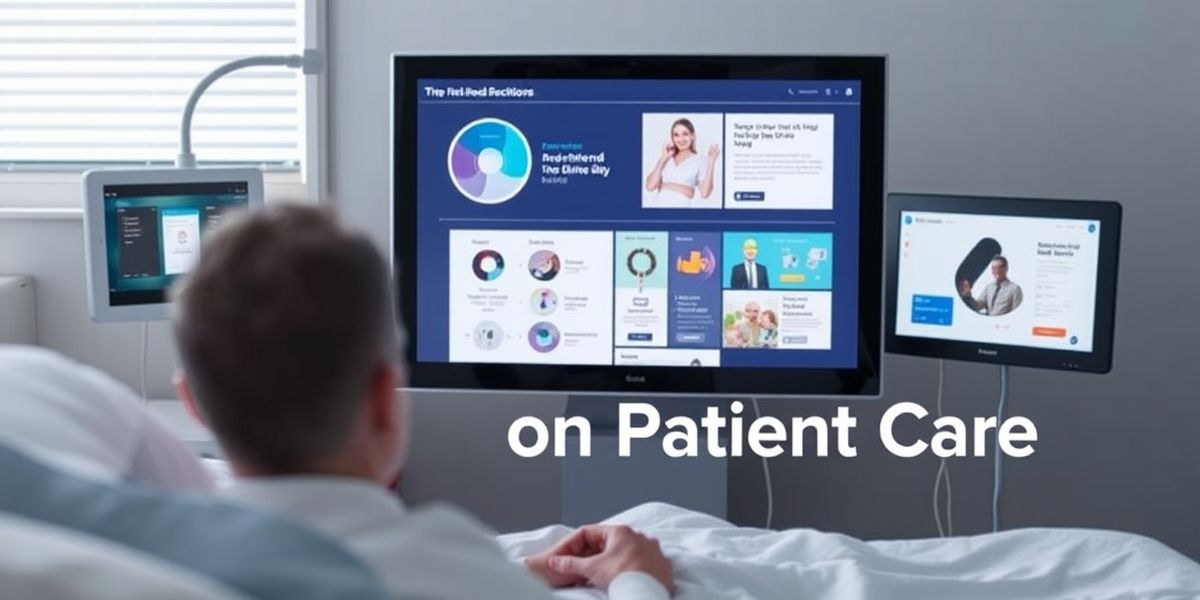
photo from internet
The Impact of Bedside Infotainment Terminals on Patient Care
Beyond convenience, Bedside Infotainment Terminals are transforming patient care in meaningful ways. Here’s how:
1. Reducing Anxiety and Stress
- A hospital bed can feel like a prison. Movies, games, and calls to loved ones offer an escape, easing the emotional toll of illness or recovery.
2. Promoting Patient Autonomy
- Control matters. Adjusting the room temperature or learning about a diagnosis at their own pace gives patients agency—a psychological boost during vulnerable times.
3. Enhancing Patient Education
- Clear, accessible health information helps patients ask better questions and stick to treatment plans, bridging the gap between doctors and patients.
4. Facilitating Family Involvement
- When in-person visits aren’t possible (think pandemics or distance), video calls keep families connected, supporting emotional well-being.
5. Supporting Remote Monitoring
- Advanced terminals with telemedicine features allow doctors to check in virtually, a boon for rural hospitals or patients with mobility issues.
These impacts align with Western values of independence, connectivity, and informed choice, making Bedside Infotainment Terminals a natural fit for the region.
Choosing the Right Bedside Infotainment Terminal
With so many options on the market, how do hospitals pick the best system? Consider these factors:
1. Functionality
- Match features to your patients’ needs. A multilingual interface might be essential in urban centers, while entertainment options could take priority elsewhere.
2. Ease of Use
- A complex interface frustrates users. Opt for a system that’s simple and intuitive for all ages.
3. Integration with Existing Systems
- The terminal should sync with electronic health records (EHR) and other hospital software for seamless operation.
4. Scalability
- Plan for the future. A system that can grow with your facility avoids costly replacements down the line.
5. Cost
- Balance initial investment with long-term value. Cheaper models might lack critical features, while premium ones could strain budgets.
6. Vendor Support
- Look for reliable installation, training, and maintenance services to keep the system running smoothly.
By weighing these elements, hospitals can find a terminal that fits their unique needs and patient demographics.
The Future of Bedside Infotainment Terminals
What’s next for this technology? As innovation accelerates, here are some exciting possibilities:
1. Artificial Intelligence (AI) Integration
- AI could personalize content (suggesting movies based on preferences) or assist via voice commands, enhancing usability.
2. Virtual Reality (VR) and Augmented Reality (AR)
- Imagine patients escaping to virtual worlds or visualizing their treatment in 3D—an immersive leap forward.
3. Advanced Telemedicine Capabilities
- Future terminals might monitor vital signs or support complex remote diagnostics, expanding care options.
4. Enhanced Security
- With patient data at stake, next-gen systems will likely feature top-tier encryption and biometric logins.
5. Sustainability
- Eco-conscious designs—think energy-efficient screens or recyclable materials—could appeal to environmentally aware Western markets.
These trends promise to keep Bedside Infotainment Terminals at the forefront of healthcare innovation.
Conclusion
Bedside Infotainment Terminals are more than gadgets—they’re a revolution in patient care. By blending entertainment, communication, and education, they turn hospital stays into opportunities for engagement and empowerment. For patients in Europe and the U.S., they offer comfort and control; for healthcare providers, they deliver efficiency and a competitive edge. As technology advances, these devices will only grow in scope, promising a future where hospital experiences are as humane as they are high-tech. Whether you’re exploring options for your facility or curious about the next wave of medical tools, Bedside Infotainment Terminals are worth watching.
FAQs:
Q1: What is a Bedside Infotainment Terminal?
A1: It’s a touchscreen device at a patient’s bedside that offers entertainment (movies, games), communication (video calls), education (health info), and hospital services (meal orders).
Q2: How do Bedside Infotainment Terminals benefit patients?
A2: They reduce boredom and stress, provide health education, and keep patients connected, improving satisfaction and engagement.
Q3: Are these terminals easy to use for all patients?
A3: Yes, they feature intuitive designs with accessibility options like voice control and large text, suitable for diverse users.
Q4: How do hospitals choose the right terminal?
A4: Focus on functionality, ease of use, integration with hospital systems, scalability, cost, and vendor support.
